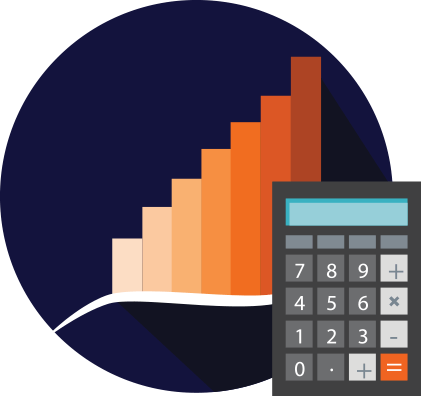One of the most important pieces of financial advice is to start an emergency fund. But, where should you keep it?
Some people like to stick with a high-yield savings account. However, there are some alternative ways to manage an emergency fund. One of those ways is to invest your emergency fund.
Let’s take a look at the pros and cons when you invest your emergency fund.
Pros and Cons of Investing Your Emergency Fund
Pros
- Your money has the potential to grow at a much faster rate than keeping it in a bank account.
- If you sell investments at a loss during an emergency, you could take a tax deduction.
- Selling older investments first lets you take advantage of the long-term capital gains rate.
Cons
- You might be stuck paying short-term capital gains taxes, depending on how long you’ve held the investment.
- You could sell at a loss due to the timing of your emergency.
- The emotional stress of having your emergency fund in the market can cause problems.
How to Invest Your Emergency Fund
If you decide it makes sense to invest your emergency fund, it’s important to understand the risks involved, as well as an asset allocation that makes sense for you.
Start by deciding whether you want to use a taxable investment account or a Roth IRA. Some people like using a Roth IRA because there is no penalty when you withdraw your contributions. However, you have to meet certain income criteria to use a Roth IRA. Additionally, you’re limited to only putting in $6,000 a year (or $7,000 if you’re at least 50), as of 2021. Finally, if you use a Roth IRA, if you end up withdrawing earnings before age 59 1/2, you could end up with additional penalties.
Others like using a taxable investment account for an emergency fund because there are fewer restrictions. There are no contribution limits and you don’t have to worry about your income. Plus, you can withdraw at any time. However, you do have to pay attention to the assets you liquidate, and you need to be aware of whether you’ll pay long-term or short-term capital gains taxes on your money.
On the other hand, if you have to sell at a loss from a taxable investment account, you can deduct the loss on your taxes. If you don’t mind selling at a loss, this can turn your emergency into a tax deduction, further increasing the efficiency of how your money is used.
Carefully consider your options to decide what makes the most sense for you.
Asset Allocation for Your Emergency Fund
After you decide what type of account you want to use, it’s time to decide on the asset allocation. For many retirement accounts, it can make sense to focus on stocks more than bonds. In fact, some investors like to have a 90/10 stock/bond allocation in their retirement accounts.
However, if you know you might need the money for an emergency, it might make more sense to have an allocation that’s considered a little less risky — since you might not have the same amount of time to recover from a stock market drop.
Some potential allocations might include a 70/30, 60/40, or even a 50/50 stock/bond allocation. Carefully consider your risk tolerance and your goals as you set up your allocation.
What Happens When You Have to Sell at a Loss?
Before you decide to invest your emergency fund, make sure you’re prepared for selling at a loss. Depending on how long you have the emergency fund, you might be ok selling some of your assets.
If you’ve built up the emergency fund over time, using dollar-cost averaging and fractional shares, there’s a good chance that you won’t have to sell all your shares to handle the emergency. Instead, you might only have to sell a small portion of your portfolio. The rest of your investments can remain in place, recovering from a drop.
When you do sell at a loss, remember that the point of the emergency fund isn’t necessarily to log big gains. Instead, it’s to provide you with necessary capital in a pinch. You have the money you need, and you can get a tax deduction for your loss. Plus, you should still have some capital in the investment account to continue accumulating gains for later.
Bottom Line
Not everyone should invest an emergency fund. In fact, many people don’t have the risk tolerance for it. However, if you decide that it makes sense in your situation, investing your emergency fund — or even just part of it — can help you get a better return for your money.

